| | Mathison Museum of Natural History |  |
|
+15Caracal widukind lucky luke Megaptera rogerpgvg Jill sunny pipsxlch Saarlooswolfhound landrover Kikimalou Taos Duck-Anch-Amun Shanti Saien 19 posters |
|
| Author | Message |
|---|
bmathison1972
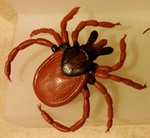
Country/State : Salt Lake City, UT
Age : 52
Joined : 2010-04-13
Posts : 6709
 |  Subject: Re: Mathison Museum of Natural History Subject: Re: Mathison Museum of Natural History  Thu Jan 12, 2023 12:42 pm Thu Jan 12, 2023 12:42 pm | |
| Species: Homarus americanus Milne-Edwards, 1837 Common name(s): Maine lobster; American lobster About the Figure: Manufacturer: Kaiyodo Series: Enoshima Aquarium Year of Production: 2011 Size/Scale: Bottlecap base 3.5 cm in diameter. Body length approximately 5.0 cm for a scale of 1:5-1:12.8 Frequency of species in toy/figure form (at time of posting): Uncommon Miscellaneous Notes: No assembly is required and the lobster is removable from its base. About the Animal: Geographic distribution: Northwest Atlantic, from Labrador to North Carolina; introduced to Norway and Iceland Habitat: Benthic; sandy and muddy areas in coastal and shelf waters at depths of 0-480 meters (usual range 4-50 meters) Diet: Carrion, benthic invertebrates, algae, eelgrass IUCN Status (at time of posting): Least Concern Miscellaneous Notes: Homarus americanus is a popular and important commercial crustacean; nearly 115,000 tonnes are caught annually, with about 57,000 tonnes coming from the waters around Maine. [You must be registered and logged in to see this image.]
Last edited by bmathison1972 on Thu Jan 12, 2023 7:59 pm; edited 1 time in total |
|
  | |
rogerpgvg
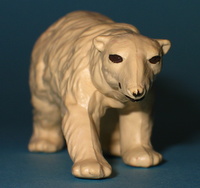
Country/State : UK
Age : 54
Joined : 2016-04-29
Posts : 3894
 |  Subject: Re: Mathison Museum of Natural History Subject: Re: Mathison Museum of Natural History  Thu Jan 12, 2023 6:55 pm Thu Jan 12, 2023 6:55 pm | |
| Beautiful model! I didn't know they could grow so large. But 110 cm isn't possible, or is it? You've got such a small arm  |
|
  | |
bmathison1972

Country/State : Salt Lake City, UT
Age : 52
Joined : 2010-04-13
Posts : 6709
 |  Subject: Re: Mathison Museum of Natural History Subject: Re: Mathison Museum of Natural History  Thu Jan 12, 2023 7:17 pm Thu Jan 12, 2023 7:17 pm | |
| - rogerpgvg wrote:
- Beautiful model! I didn't know they could grow so large. But 110 cm isn't possible, or is it?
You've got such a small arm  what is the 110 cm reference to? |
|
  | |
rogerpgvg

Country/State : UK
Age : 54
Joined : 2016-04-29
Posts : 3894
 |  Subject: Re: Mathison Museum of Natural History Subject: Re: Mathison Museum of Natural History  Thu Jan 12, 2023 7:25 pm Thu Jan 12, 2023 7:25 pm | |
| Not to your arm  The lobster is 5 cm. If the scale is 1:22, then it would be 110 cm. |
|
  | |
bmathison1972

Country/State : Salt Lake City, UT
Age : 52
Joined : 2010-04-13
Posts : 6709
 |  Subject: Re: Mathison Museum of Natural History Subject: Re: Mathison Museum of Natural History  Thu Jan 12, 2023 7:28 pm Thu Jan 12, 2023 7:28 pm | |
| - rogerpgvg wrote:
- Not to your arm

The lobster is 5 cm. If the scale is 1:22, then it would be 110 cm. yes, lobsters can get to 110 (actually, I think I've seen 114 cm) but 110 is documented a couple places |
|
  | |
rogerpgvg

Country/State : UK
Age : 54
Joined : 2016-04-29
Posts : 3894
 |  Subject: Re: Mathison Museum of Natural History Subject: Re: Mathison Museum of Natural History  Thu Jan 12, 2023 7:38 pm Thu Jan 12, 2023 7:38 pm | |
| I wonder whether that might include the tentacles. Many websites say max 64 cm, still very large. |
|
  | |
bmathison1972

Country/State : Salt Lake City, UT
Age : 52
Joined : 2010-04-13
Posts : 6709
 |  Subject: Re: Mathison Museum of Natural History Subject: Re: Mathison Museum of Natural History  Thu Jan 12, 2023 7:51 pm Thu Jan 12, 2023 7:51 pm | |
| - rogerpgvg wrote:
- I wonder whether that might include the tentacles. Many websites say max 64 cm, still very large.
That length is from SeaBase, which used this reference: [You must be registered and logged in to see this link.]I cannot access it to see if it's body length or include claw length, which might indeed be the case. Most records of a maximum of 64 cm come from Wikipedia, which uses FAO Fisheries database. I don't generally accept Wikipedia data unless I can verify it from another source, preferably in a peer-reviewed journal. If anyone can access that JSTOR article, I would be happy to know, and will recalculate the scale accordingly! |
|
  | |
bmathison1972

Country/State : Salt Lake City, UT
Age : 52
Joined : 2010-04-13
Posts : 6709
 |  Subject: Re: Mathison Museum of Natural History Subject: Re: Mathison Museum of Natural History  Thu Jan 12, 2023 8:00 pm Thu Jan 12, 2023 8:00 pm | |
| - bmathison1972 wrote:
- rogerpgvg wrote:
- I wonder whether that might include the tentacles. Many websites say max 64 cm, still very large.
That length is from SeaBase, which used this reference: [You must be registered and logged in to see this link.]
I cannot access it to see if it's body length or include claw length, which might indeed be the case.
Most records of a maximum of 64 cm come from Wikipedia, which uses FAO Fisheries database. I don't generally accept Wikipedia data unless I can verify it from another source, preferably in a peer-reviewed journal. If anyone can access that JSTOR article, I would be happy to know, and will recalculate the scale accordingly! I was able to download the paper and yes, 114 is based on the body length including claws! I have recalculated using 64 as a maximum! Thank you for alerting me to this, rogerpgvg |
|
  | |
widukind
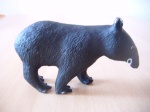
Country/State : Germany
Age : 48
Joined : 2010-12-30
Posts : 45745
 |  Subject: Re: Mathison Museum of Natural History Subject: Re: Mathison Museum of Natural History  Fri Jan 13, 2023 9:48 am Fri Jan 13, 2023 9:48 am | |
| |
|
  | |
bmathison1972

Country/State : Salt Lake City, UT
Age : 52
Joined : 2010-04-13
Posts : 6709
 |  Subject: Re: Mathison Museum of Natural History Subject: Re: Mathison Museum of Natural History  Fri Jan 13, 2023 1:02 pm Fri Jan 13, 2023 1:02 pm | |
| Species: † Bathyurus ingalli Raymond, 1913 About the Figure: Manufacturer: Safari Ltd. Series: Ancient Fossils TOOB; Safariology - Ancient Fossils Years of Production: 2009; 2012 Size/Scale: Body length of TOOB figure 4.5 cm, within scale 1:1. Body length of Safariology figure 11.5 cm for a scale of approximately 2:1 Frequency of species in toy/figure form (at time of posting): Very rare (unique as a pair) Miscellaneous Notes: The TOOB figure was produced in 2009; the larger Safariology figure was produced in 2012. Safari Ltd. marketed the TOOB figure as Raymondites, which is now considered a subgenus of Bathyurus. The Safariology figure wasn't marketed at the genus level, but is clearly just a larger version of the TOOB figure. The species-level identification is my own, based on images online, including one of a specimen from the AMNH, that may have been the influence for the original TOOB figure. At some point the TOOB was re-released with slight alterations in the paint color; in the newer set the rock matrix around the trilobite was painted tan rather than grey. About the Animal: Geographic distribution: Ordovician of present-day northeastern North America (Ontario, Wisconsin) Habitat: Benthic; in shallow, peritidal waters Diet: Deposit feeder of organic material in marine sediment IUCN Status (at time of posting): N/A [prehistoric] Miscellaneous Notes: Raymondites was originally described as a subgenus of Bathyurus in 1944. In 1953 and then again in 1959, Raymondites was elevated to the genus level to include non-spinose species. A phylogenetic analysis in 2015 showed that Raymondites is probably best left as a subgenus of Bathyurus, with the two taxa united by the loss of the anterior border on the frontal area (with a reversal in one species). Other characters in common with both taxa are the presence of a tuberculate structure on the glabella, a relatively short palebral lobe with a length less than half of preoccipital glabellar length, and a pygidial outline that is rounded posteriorly. Most species possess occipital spines and axial pygidial spines (in species where the pygidium has been recovered). [You must be registered and logged in to see this image.]
Last edited by bmathison1972 on Fri Jan 13, 2023 7:12 pm; edited 1 time in total |
|
  | |
Caracal
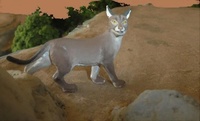
Country/State : France
Age : 65
Joined : 2018-10-24
Posts : 7252
 | |
  | |
widukind

Country/State : Germany
Age : 48
Joined : 2010-12-30
Posts : 45745
 |  Subject: Re: Mathison Museum of Natural History Subject: Re: Mathison Museum of Natural History  Fri Jan 13, 2023 7:12 pm Fri Jan 13, 2023 7:12 pm | |
| |
|
  | |
bmathison1972

Country/State : Salt Lake City, UT
Age : 52
Joined : 2010-04-13
Posts : 6709
 |  Subject: Re: Mathison Museum of Natural History Subject: Re: Mathison Museum of Natural History  Sat Jan 14, 2023 2:18 pm Sat Jan 14, 2023 2:18 pm | |
| Species: Crematogaster lineolata (Say, 1836) Common name(s): Texas shed-builder ant About the Figure: Manufacturer: Club Earth Series: Ants and Termites Year of Production: unknown Size/Scale: Body length 4.8 cm for a scale of 19.2:1-13.7:1 Frequency of species in toy/figure form (at time of posting): Unique Miscellaneous Notes: Ants are very common in 'bin sets' of insects, but we so rarely get them marketed at the genus or species level. All of the figures in Club Earth's Ants and Termites collection come with common English names stamped on the underside; they all seem to represent Nearctic species. About the Animal: Geographic distribution: Eastern North America, from southern Canada to Mexico Habitat: Mixed hardwood forests, swampy and floodplain forests, grasslands; nests usually occur in logs, tree stumps, in acorns or other nuts on the ground, and under rocks Diet: Honeydew derived from aphids IUCN Status (at time of posting): Not Evaluated Miscellaneous Notes: Crematogaster lineolata typically has small colonies (less than a few hundred workers) that are monogynous (with only one queen). Since some of the smaller colonies, especially those that occur in excavated acorns and other large nuts, don’t have queens, it is believed the ant can exhibit polydomous nesting behavior, meaning the colony is inhabiting multiple nests that are spatially separated. [You must be registered and logged in to see this image.] |
|
  | |
widukind

Country/State : Germany
Age : 48
Joined : 2010-12-30
Posts : 45745
 |  Subject: Re: Mathison Museum of Natural History Subject: Re: Mathison Museum of Natural History  Sat Jan 14, 2023 6:31 pm Sat Jan 14, 2023 6:31 pm | |
| |
|
  | |
bmathison1972

Country/State : Salt Lake City, UT
Age : 52
Joined : 2010-04-13
Posts : 6709
 |  Subject: Re: Mathison Museum of Natural History Subject: Re: Mathison Museum of Natural History  Sun Jan 15, 2023 1:54 pm Sun Jan 15, 2023 1:54 pm | |
| Species: Myrmecocystus spp. Common name(s): honeypot ants; honey ants About the Figure: Manufacturer: Club Earth Series: Ants and Termites Year of Production: unknown Size/Scale: Body length (exclusive of wings and appendages) 4.0 cm for a scale of 4.5:1 for an alate (see below) Frequency of species in toy/figure form (at time of posting): Unique (see below) Miscellaneous Notes: This figure is stamped 'Arid Lands Honey Ant' but I cannot find a specific species attributable to that common name, and most species in the genus live in arid environments. The measurements above are based on M. mimicus. Interesting Club Earth chose to have this figure represent an alate (winged specimen), since honeypot ants are best known for their repletes (see below). At the time of this writing, this figure is unique; however, later this year CollectA will be releasing a honeypot ant, which will represent a replete! About the Animal: Geographic distribution: Western United States and Mexico Habitat: Arid and semi-arid habitats, including juniper woodlands, sage scrub, arid grasslands, saltbush deserts, steppes Diet: Nectar, honeydew derived from sternorrhynchan insects, and honey from repletes (see below) IUCN Status (at time of posting): N/A [species-dependent, but none are currently listed on the IUCN's website] Miscellaneous Notes: Honeypot ants are best known for the replete, or plerergate, members of their caste system. Repletes are sterile works that serve as food reserves for when other food sources are scarce. The repletes hang from the 'ceiling' of the nest and are gorged with food to the point their abdomens become greatly distended with honey. When needed, other worker ants will gently stroke the antennae of the replete, getting it to regurgitate stored liquid in its crop. Honeypot ants have been used a food source for indigenous peoples in Southwest North America and Australia. [You must be registered and logged in to see this image.] |
|
  | |
widukind

Country/State : Germany
Age : 48
Joined : 2010-12-30
Posts : 45745
 |  Subject: Re: Mathison Museum of Natural History Subject: Re: Mathison Museum of Natural History  Sun Jan 15, 2023 6:44 pm Sun Jan 15, 2023 6:44 pm | |
| |
|
  | |
bmathison1972

Country/State : Salt Lake City, UT
Age : 52
Joined : 2010-04-13
Posts : 6709
 |  Subject: Re: Mathison Museum of Natural History Subject: Re: Mathison Museum of Natural History  Mon Jan 16, 2023 1:56 pm Mon Jan 16, 2023 1:56 pm | |
| Species: Fistulobalanus albicostatus (Pilsbry, 1916) About the Figure: Manufacturer: Kitan Club Series: Nature Techni Colour - Barnacles Year of Production: 2012 Size/Scale: Figures 1.1 cm and 1.8 cm, respectively, across their widest points, within scale 1:1 Frequency of species in toy/figure form (at time of posting): Unique (as a pair) Miscellaneous Notes: These figures were marketed as Amphibalanus albicostatus, which is now regarded as a synonym of F. albicostatus. Both of these figures have non-obtrusive magnets on the underside. About the Animal: Geographic distribution: West Pacific; introduced to California on planted batches of Pacific oysters ( Crassostrea gigas). Habitat: Mid-to-lower intertidal and sheltered waters; usually on hard surfaces such as docks, logs, mangroves, rocks, ship hulls, and the shells of oysters and other shellfish Diet: Suspension feeder of zooplankton and phytoplankton IUCN Status (at time of posting): Not Evaluated Miscellaneous Notes: Fistulobalanus albicostatus is considered a species of fouling barnacle. Fouling is the accumulation of marine organisms on the surface of natural or artificial structures. When fouling barnacles accumulate on the hull of a ship, there becomes a negative impact on the hydrodynamic drag as the shells of the animal create increased friction between the hull and water. This also results in increased fuel consumption and carbon emissions. [You must be registered and logged in to see this image.] |
|
  | |
lucky luke
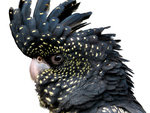
Country/State : FRANCE Saint-Louis
Age : 62
Joined : 2010-07-17
Posts : 6296
 |  Subject: Re: Mathison Museum of Natural History Subject: Re: Mathison Museum of Natural History  Mon Jan 16, 2023 3:41 pm Mon Jan 16, 2023 3:41 pm | |
| |
|
  | |
widukind

Country/State : Germany
Age : 48
Joined : 2010-12-30
Posts : 45745
 |  Subject: Re: Mathison Museum of Natural History Subject: Re: Mathison Museum of Natural History  Mon Jan 16, 2023 5:28 pm Mon Jan 16, 2023 5:28 pm | |
| |
|
  | |
bmathison1972

Country/State : Salt Lake City, UT
Age : 52
Joined : 2010-04-13
Posts : 6709
 |  Subject: Re: Mathison Museum of Natural History Subject: Re: Mathison Museum of Natural History  Tue Jan 17, 2023 12:44 pm Tue Jan 17, 2023 12:44 pm | |
| Species: Poecilotheria regalis Pocock, 1899 Common name(s): Indian ornamental tarantula; Indian ornamental tree spider About the Figure: Manufacturer: Play Visions Series: Habitat Earth - Tarantulas and Spiders Year of Production: 1995 Size/Scale: Legspan 7.0 cm for a scale of approximately 1:3 Frequency of species in toy/figure form (at time of posting): Very rare Miscellaneous Notes: The paint job here is a bit stylized and may have been influenced more by the ventral side of the spider rather than the dorsal side (this happens from time-to-time with older figures), although occasionally adult female specimens will have bold yellow on the dorsal portion of the legs. To my knowledge, this is the only figure specifically marketed as P. regalis. In 2021, Tarlin released a spider that was clearly influenced by something in the genus Poecilotheria to which I have personally assigned the species P. regalis. About the Animal: Geographic distribution: Southern India (Western and Eastern Ghats) Habitat: Montane rainforest; arboreal Diet: Flying insects IUCN Status (at time of posting): Least Concern Miscellaneous Notes: Poecilotheria regalis is described as having a 'medically significant' venom, even though there are no reported deaths attributed to P. regalis. Symptoms reported with the bite of P. regalis include local swelling, erythema, mild to severe pain, generalized muscle cramps, burning sensation, fever, myalgia, heavy breathing, increased heart rate, and brief loss of consciousness. [You must be registered and logged in to see this image.] |
|
  | |
widukind

Country/State : Germany
Age : 48
Joined : 2010-12-30
Posts : 45745
 |  Subject: Re: Mathison Museum of Natural History Subject: Re: Mathison Museum of Natural History  Tue Jan 17, 2023 6:09 pm Tue Jan 17, 2023 6:09 pm | |
| |
|
  | |
Caracal

Country/State : France
Age : 65
Joined : 2018-10-24
Posts : 7252
 | |
  | |
bmathison1972

Country/State : Salt Lake City, UT
Age : 52
Joined : 2010-04-13
Posts : 6709
 |  Subject: Re: Mathison Museum of Natural History Subject: Re: Mathison Museum of Natural History  Wed Jan 18, 2023 12:33 pm Wed Jan 18, 2023 12:33 pm | |
| Species: Prosopocoilus dissimilis (Boileau, 1898) About the Figure: Manufacturer: Bandai Series: Diversity of Life on Earth - Stag Beetles Vol. 1 Year of Production: 2020 Size/Scale: Wingspan 15.5 cm. Body length (including mandibles) 13.5 cm for a scale of approximately 2:1 for a large major male specimen Frequency of species in toy/figure form (at time of posting): Uncommon Miscellaneous Notes: This is the third time we've seen P. dissimilis in the Museum. Like most other models in the Diversity of Life on Earth line, this beetle is large, requires assembly, is articulated, and may be expensive. It's a model for serious collectors and not a toy to be played with. Today's figure was in the first of the Diversity of Life on Earth beetle sets, and it's a little cruder than future releases. It also came in black and has the option of being displayed on a base (not shown) as if in flight. About the Animal: Geographic distribution: Japan Habitat: Hardwood forests Diet: Larvae feed in rotting logs; adults are attracted to sap flows IUCN Status (at time of posting): Not Evaluated Miscellaneous Notes: Depending on the taxonomy used, there are anywhere from 2-6 subspecies of P. dissimilis, all endemic to various Japanese islands. Based on the most liberal system, those six subspecies and their geographic distributions are as follows: P. d. dissimilis (Amami-oshima Island and Kakeromajima Islands); P. d. elegans (Tokara Islands); P. d. makinoi (Tokunoskima Island); P. d. okinoerabuanus (Okinoerabukima Island); P. d. okinawanus (Okinawa, Minnajima, Sesokojima, Iheyajima, and Kourijima Islands); P. d. kumejimaensis (Kumejima Island). In a more conservative system, there are two subspecies, P. d. dissimilis (which contains all of the aforemented subspecies as synonyms) and P. d. hayashii (Iheyajima Island). [You must be registered and logged in to see this image.]
Last edited by bmathison1972 on Tue Jan 31, 2023 2:36 pm; edited 1 time in total |
|
  | |
widukind

Country/State : Germany
Age : 48
Joined : 2010-12-30
Posts : 45745
 |  Subject: Re: Mathison Museum of Natural History Subject: Re: Mathison Museum of Natural History  Wed Jan 18, 2023 5:29 pm Wed Jan 18, 2023 5:29 pm | |
| |
|
  | |
bmathison1972

Country/State : Salt Lake City, UT
Age : 52
Joined : 2010-04-13
Posts : 6709
 |  Subject: Re: Mathison Museum of Natural History Subject: Re: Mathison Museum of Natural History  Thu Jan 19, 2023 12:33 pm Thu Jan 19, 2023 12:33 pm | |
| Species: Pearsonothuria graeffei (Semper, 1868) Common name(s): blackspotted sea cucumber; Graeffe's sea cucumber About the Figure: Manufacturer: Cadbury Series: Yowies Series 3 Year of Production: 1999 Size/Scale: Body length 6.5 cm for a scale of 1:4.5-1:7 Frequency of species in toy/figure form (at time of posting): Unique Miscellaneous Notes: Being one of the original Australian Yowies, some assembly is required and the final product is slightly articulated. About the Animal: Geographic distribution: Indo-Pacific Habitat: Coral reefs, at depths of 0-30 meters Diet: Scavenger on organic material and debris IUCN Status (at time of posting): Least Concern Miscellaneous Notes: Spawning and fertilization of P. graeffei is external. The sea cucumber is known to spawn simultaneously with other echinoderms, including the crown-of-thorns starfish ( Acanthaster planci) and the porcupine sea urchin ( Diadema setosum). Juvenile P. graeffei mimic the aposematic sea slug, Phyllidia varicosa. [You must be registered and logged in to see this image.] |
|
  | |
Sponsored content
 |  Subject: Re: Mathison Museum of Natural History Subject: Re: Mathison Museum of Natural History  | |
| |
|
  | |
| | Mathison Museum of Natural History |  |
|
